“I ordered some parts to build a new device for Ahmad, and I programmed it by myself,” he beamed.
Asem, a 21-year-old Syrian refugee, was a university student before his country’s civil war. He dropped out to become a paramedic. During a mission to rescue injured civilians, a shell hit his ambulance, and his world went dark. When he came to, Asem realized his leg had vanished into the vortex of loss and destruction that is today’s Middle East.
A year later, Asem taught himself how to use a 3D printer in three weeks and how to code an Arduino in three days. “You’ll see my new skills better and better,” he proclaimed proudly. He had produced two low-cost, open-source healthcare solutions for other disabled victims of conflict: a 3D-printed prosthetic hand and an ultrasonic echolocation device for his friend Ahmad, who was blinded by sniper fire in Syria.
Asem rapidly absorbed expertise in advanced technology in order to help those who had lost everything. He found a path to dignity and purpose as a volunteer for Refugee Open Ware (ROW), our consortium for humanitarian innovation.“ROW gives people hope to live,” he said. “We changed the life of an amputee to become a good thing in this world.”
Conflict, radicalization, violent extremism, forced displacement and youth unemployment are intensifying rapidly and feeding upon each other. Governments lack the resources to cope. The UN High Commissioner for Refugees António Guterres remarked, “With the exponential increase in needs we have seen just in the last three years, the humanitarian financing system is nearly bankrupt.”
The Fourth Industrial Revolution could make matters worse. Automation is eroding job opportunities for those with low educational attainment, and millions of refugee children will grow up uneducated or poorly educated. The Middle East and North Africa region already suffers the highest youth unemployment rates in the world. If we find it hard to create enough jobs in the region now, how will we do it in the future? While the world economy transforms at warp speed, communities affected by conflict will fall further behind, and the lack of opportunities for young people will fuel further violence. As world leaders craft their approach to conflict over the coming decades, they have a choice: either ride the wave of the next industrial revolution, or be crushed by it.
ROW leverages the technologies of the Fourth Industrial Revolution to improve basic needs provision in conflict-affected areas. This includes 3D printing, robotics, artificial intelligence, the internet of things, advanced materials, brain-computer interface, virtual reality and more. These technologies can enable displaced communities, trapped in liminality, to once again feel connected to the future, empowered to rebuild the shattered world around them.
We are creating a network of innovation centers that crowd-source, co-create and test solutions to the world’s toughest humanitarian challenges. These makerspaces and incubators for humanitarian innovation will be stocked with advanced manufacturing equipment (e.g., 3D printers, CNC routers, precision milling machines, laser cutters). They will be physical platforms for STEAM education, workforce development, entrepreneurship training, co-working space, knowledge exchange, social cohesion and psychosocial support through interactive art.
We have seven innovation centers in our pipeline, focusing on solutions for three levels of conflict: an active war zone (Syria), neighboring countries (Jordan and Turkey) and resettlement states (Europe). Public-private partnerships are critical for these projects. We are building two centers for vocational training and business incubation in Jordan — one in Amman and one in Irbid, funded with over $7 million from the European Union, USAID, an American philanthropist, the Jordanian private sector, and the Government of Jordan. We’re also fundraising for innovation centers dedicated to rescue technology, education and prosthetics. New financing vehicles must emerge to realize the full potential of such initiatives.We propose a $100 million impact investment fund for humanitarian technology and innovation, as well as humanitarian impact bonds for the refugee crisis.
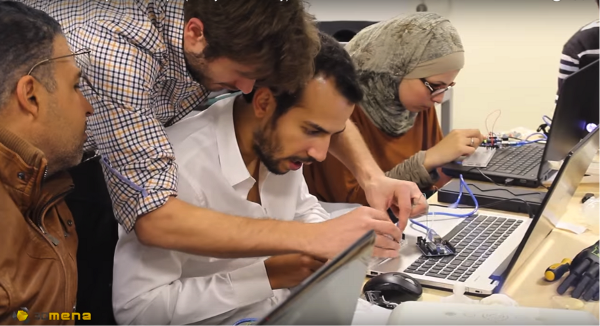
3Dmena, a Founding Partner of ROW, providing an additive manufacturing (3D printing) and physical computing course in Amman, Jordan
Our training program focuses on creativity, innovation, entrepreneurship and technology development — the skills least susceptible to automation. Furthermore, we seek to incubate technologies that dramatically reduce the cost and increase the effectiveness of humanitarian relief. We focus on the biggest cost driver of humanitarian relief, procurement and logistics, which account for 60–80% of the sector’s costs, amounting to $10-$15 billion per year. Asem’s story exemplifies what we can achieve through distributed manufacturing, which is powered by advanced manufacturing equipment and is central to our approach. When a piece of Asem’s prosthetic leg broke, he 3D printed a replacement. Working with our team’s international expert, it took him twenty minutes to design and two hours to print — and it reduced the cost of the piece by 95%. Without this piece, he can’t walk. Besides reducing costs, distributed manufacturing can also decrease the carbon footprint of humanitarian goods, while promoting self-reliance, dignity and creativity.
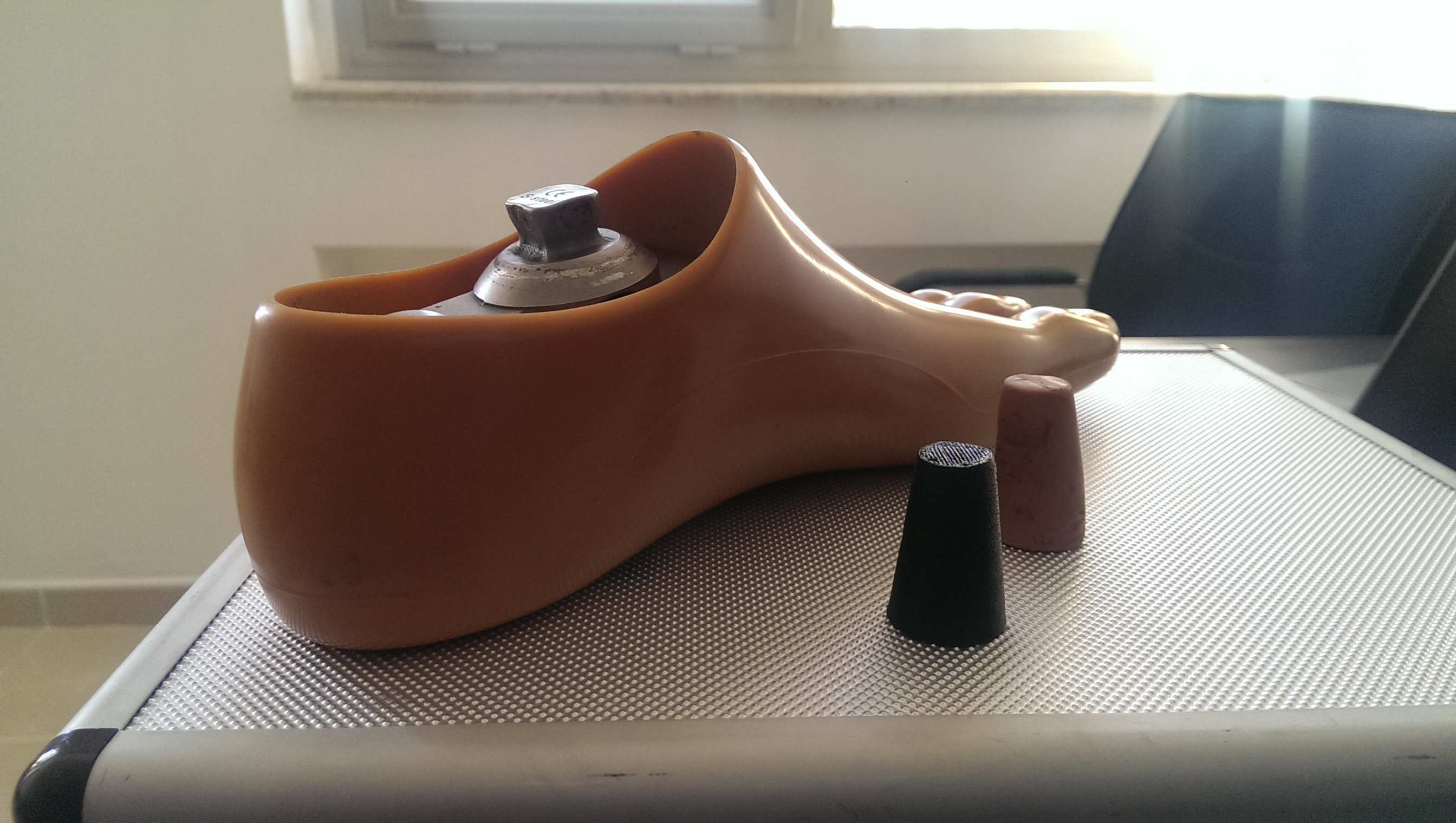
The black wedge, 3D printed in thermoplastic elastomer, replaced the standard rubber wedge behind it. The wedge functions as the heel of the prosthetic foot.
“We’ll do the impossible, bro,” Asem avowed, looking to the future with newfound hope and sense of belonging. The Fourth Industrial Revolution will undoubtedly shape the contours of wealth and power for decades to come. It could also transform humanitarian relief. We propose harnessing the innovation and technologies of this revolution to re-define the possible, with and for those affected by conflict.
Open-source 3D printed prosthetic hand, printed in carbon fiber-reinforced co-polyester, with an Arduino-powered Ben10 watch. Cost: $75. The hand was co-created with a 6-year-old Yemeni refugee treated by Doctors Without Borders. When asked who his superhero was, he said, “Ben10.” A Jordanian mechanical designer based in Fab Lab Barcelona then customized this hand for him, including an embedded computer with animation of Ben10 aliens. Asem, working with our international expert in Amman, printed and fit the hand.
NB: The authors of this blog are Dave Levin, Jamil Wyne and Loay Malahmeh.

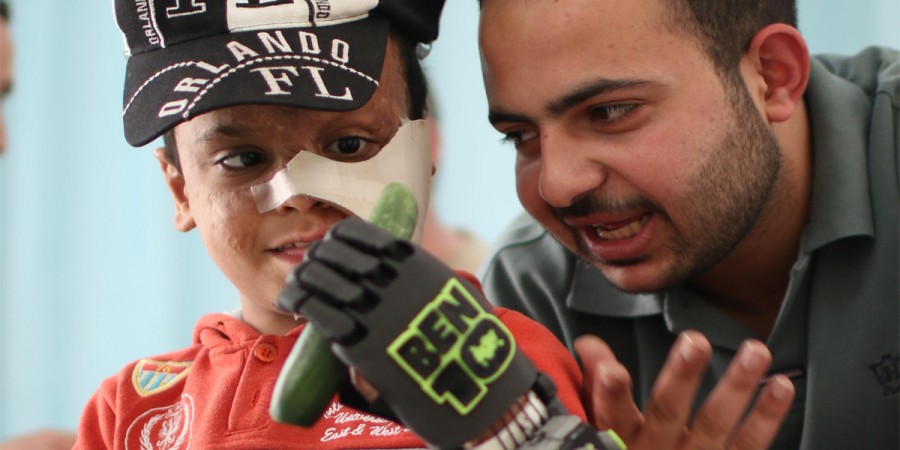
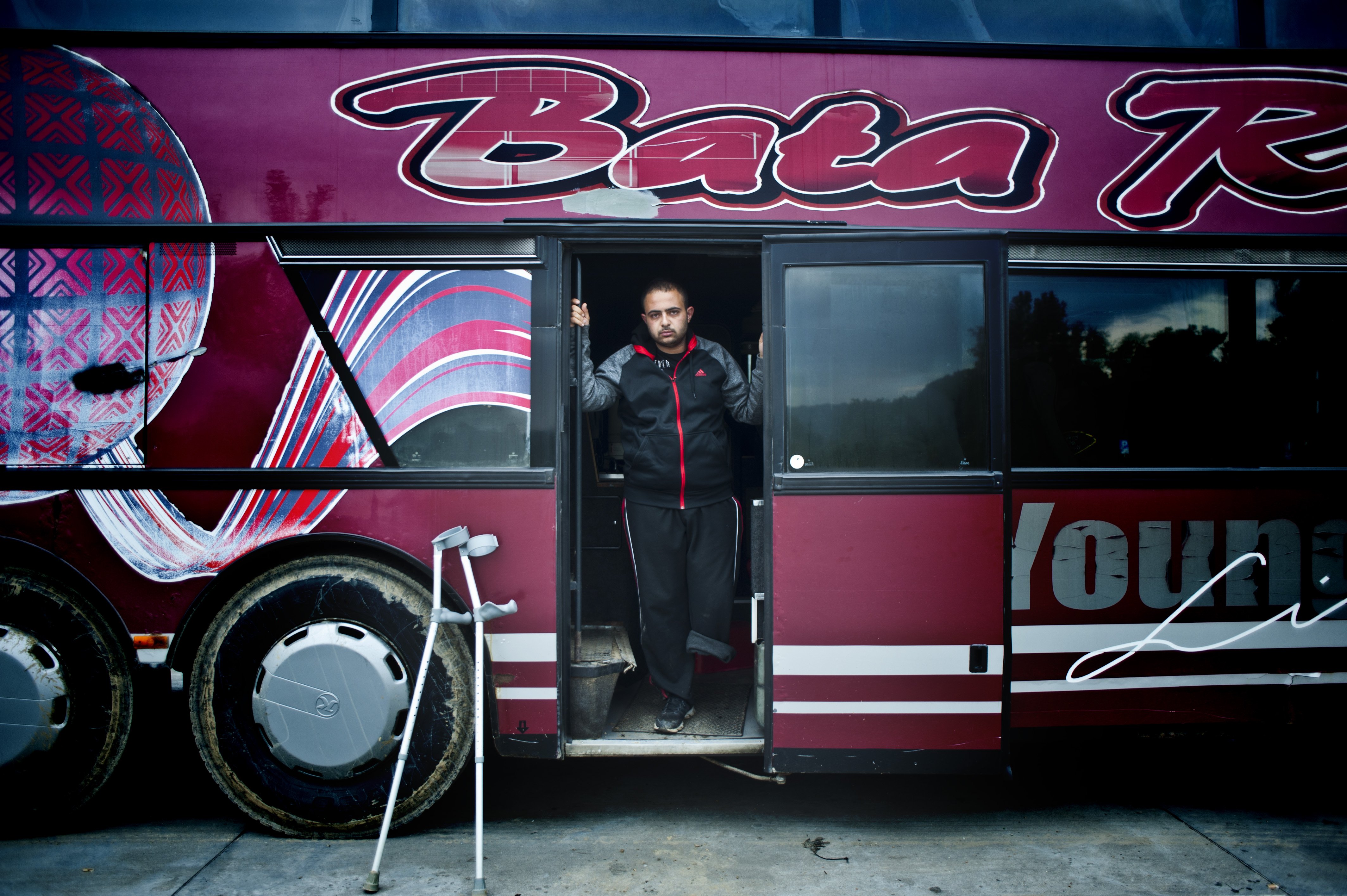
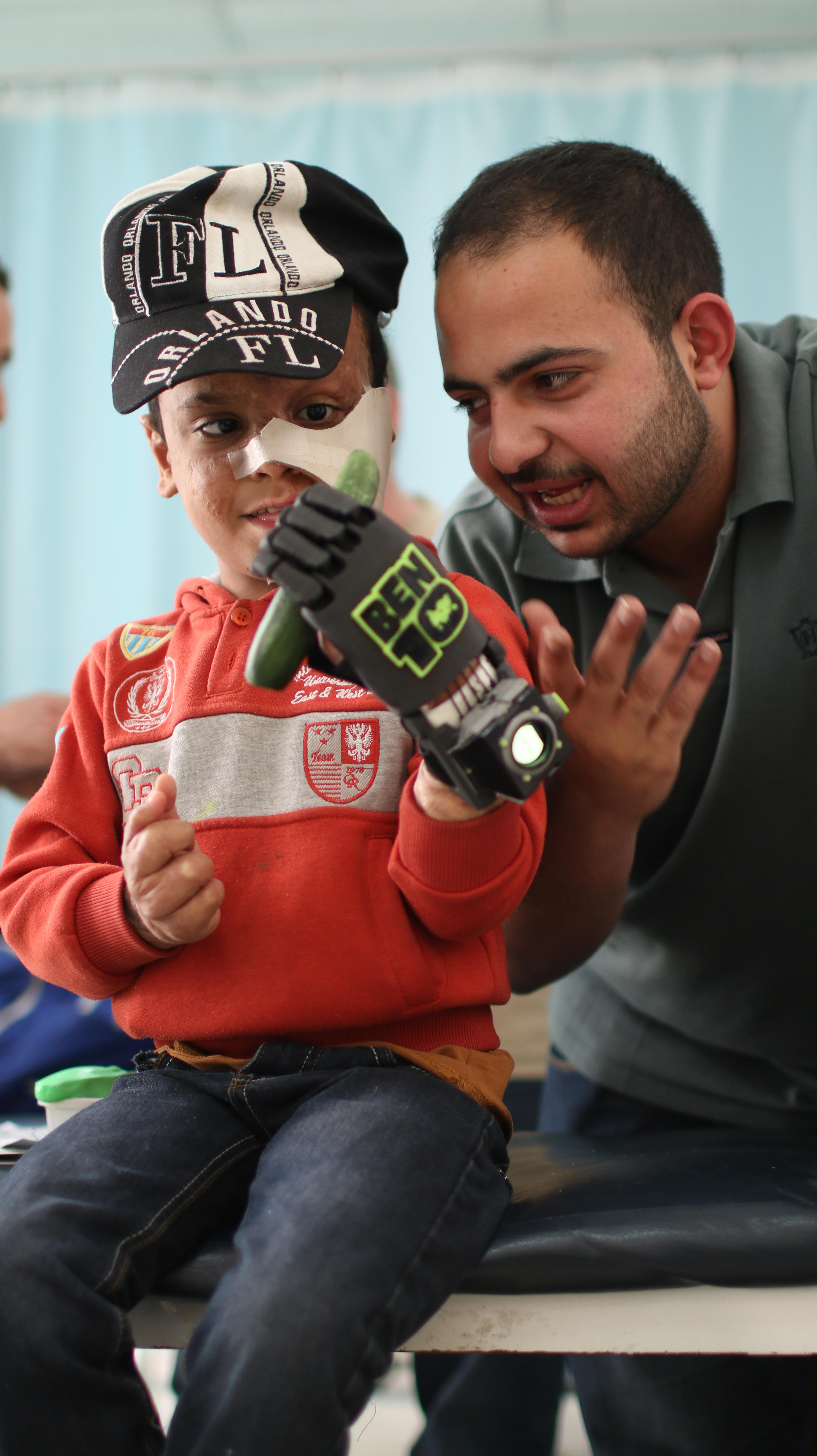
Comments